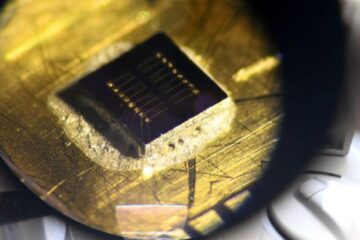Institute of Physics continues to urge a moratorium

The £80 million shortfall in the Science and Technology Facilities (STFC) budget has resulted in a delivery plan that will lead to job losses at universities and three leading research laboratories; a cut in university research grants; and withdrawal from a number of high-profile programmes such as the International Linear Collider and the Southern Hemisphere Observatory’s Gemini Telescope.
Professor Peter Main, director of education and science at IOP, Professor Michael Rowan Robinson, President of the Royal Astronomical Society, and Tony Bell, national secretary for Prospect, the trade union which represents many of the concerned physicists, presented evidence together to the Committee which was chaired by Phil Willis MP.
Shortly after the evidence session, Professor Peter Main explained, “A number of major decisions were made with very little notice which is why the delivery plan has caused such an outcry. We are calling for a more considered approach. We want the Wakeham Review to explicitly take this issue into consideration and be given time to feed back to government before irreversible damage is done.”
In the second evidence session, Professor Keith Mason, chief executive of STFC, and Professor Ian Diamond, chair of Research Councils UK, explained that STFC’s settlement was generous considering the current economic climate and maintained that decisions to cut specific programmes had been made with the appropriate level of consultation.
Media Contact
More Information:
http://www.iop.orgAll latest news from the category: Physics and Astronomy
This area deals with the fundamental laws and building blocks of nature and how they interact, the properties and the behavior of matter, and research into space and time and their structures.
innovations-report provides in-depth reports and articles on subjects such as astrophysics, laser technologies, nuclear, quantum, particle and solid-state physics, nanotechnologies, planetary research and findings (Mars, Venus) and developments related to the Hubble Telescope.
Newest articles

Sea slugs inspire highly stretchable biomedical sensor
USC Viterbi School of Engineering researcher Hangbo Zhao presents findings on highly stretchable and customizable microneedles for application in fields including neuroscience, tissue engineering, and wearable bioelectronics. The revolution in…

Twisting and binding matter waves with photons in a cavity
Precisely measuring the energy states of individual atoms has been a historical challenge for physicists due to atomic recoil. When an atom interacts with a photon, the atom “recoils” in…

Nanotubes, nanoparticles, and antibodies detect tiny amounts of fentanyl
New sensor is six orders of magnitude more sensitive than the next best thing. A research team at Pitt led by Alexander Star, a chemistry professor in the Kenneth P. Dietrich…





















